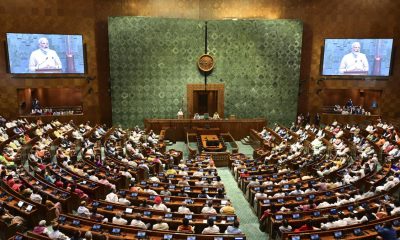Analysis
Income goal alone a deceptive measure of progress, says NPA
The government’s goal of attaining middle-income status for Uganda in four years, the National Planning Authority (NPA) has warned.
The lower middle-income status is a mere statistic, argues the NPA, showing that on average an individual Ugandan, young or old, educated or not, will have attained income of US$1,039 by 2020. Currently, Uganda’s per-capita income is US$764 per per person.
The NPA recently held a sensitization workshop for the public which was aimed at refocusing the debate towards attaining Uganda’s development goals as spelt out in the National Development Plan.
Whereas the average income target of US$1,039 is part of the NPA’s target, the planning authority says that different players need to go beyond average income to consider other social economic variables such as level of education, access and quality of health care.
“Attaining middle income with a focus on GNI Per Capita alone should not be Uganda’s preferred approach, but rather a broader focus including improvement in social welfare indicators.
“For example, whereas Equatorial Guinea and Angola are upper middle income countries, they are doing relatively worse than Uganda on several socio-economic indicators (poverty, maternal mortality, access to water coverage etc) the NPA argues.
“Nigeria, Ghana, Angola, Swaziland, and Zambia have attained middle income status, their poverty levels are still alarming, that is 46%, 24.2%, 36.6%, 63%, and 60.5% respectively. These countries have poverty levels higher than Uganda’s 19.5 % and yet Uganda is still a low income country. Thus, middle income based on per capita income alone should not be an end in itself.
According to the NPA, progress towards middle-income status should strengthen Uganda’s competitiveness for sustainable wealth creation, employment and inclusive growth.
“The key results are: increased exports; reduced poverty; increased employment levels; and, improved socio indicators in health such as level of malnutrition, under five mortality rate and victims of natural disasters.
The NDP identified three critical growth opportunities in Agriculture, Tourism, and Minerals, Oil and Gas; as well as two fundamentals of Infrastructure and Human Capital Development as the pillars towards achieving the goal.
In order to attain the middle-income goal, the NDP has developed what it calls a transformational approach, which includes; strengthening implementation, effectiveness and efficiency in public service delivery.
“Picking from the lessons and international experiences highlighted in this paper, the country requires a transformational approach in a number of areas to fast track the attainment of the middle income goal.
“All Sectors and MDAs should have strategic plans and budgets aligned to the National Development Agenda. Sectors without approved strategic plans should face clear sanctions. Incentives mechanisms to direct efforts of non-state actors towards the NDP agenda should be put in place.
It NPA has also called for;
Enforcement of performance contracts for all accounting officers with clear incentives and sanctions for non-performance.
*Develop, disseminate and enforce regulations, service and service delivery standards towards quality assurance, value for money and compliance with the view to using the standards to inform performance contracts. The NPA has suggested that Permanent Secretaries for example get a pay raise up to Ushs15m per month upon satisfaction with results.
*Take advantage of traditional, faith based leaders, CSOs, and parish chiefs in mobilising communities towards the realization of the country aspirations.
*Strengthen Public Investment Management (PIM) so as to maximize returns from public investments. This will require strengthening sectoral and national capacity across the entire PIM cycle right from: project identification, development, implementation and management. Currently, projects are sometimes originated by a single ministry or an individual in a ministry, by an investor and rarely do they attract input from other departments.
*Adequately sequence projects and multi-year commitments through coordinated and adequately sequenced planning. This will require; first prioritizing interrelated sub projects intended to support the implementation of the main project.
This recommendation comes amid concern that too many big projects especially in the transport and energy sectors are being implemented with negative effects on the economy such as poor absorption capacities.
Comments



















